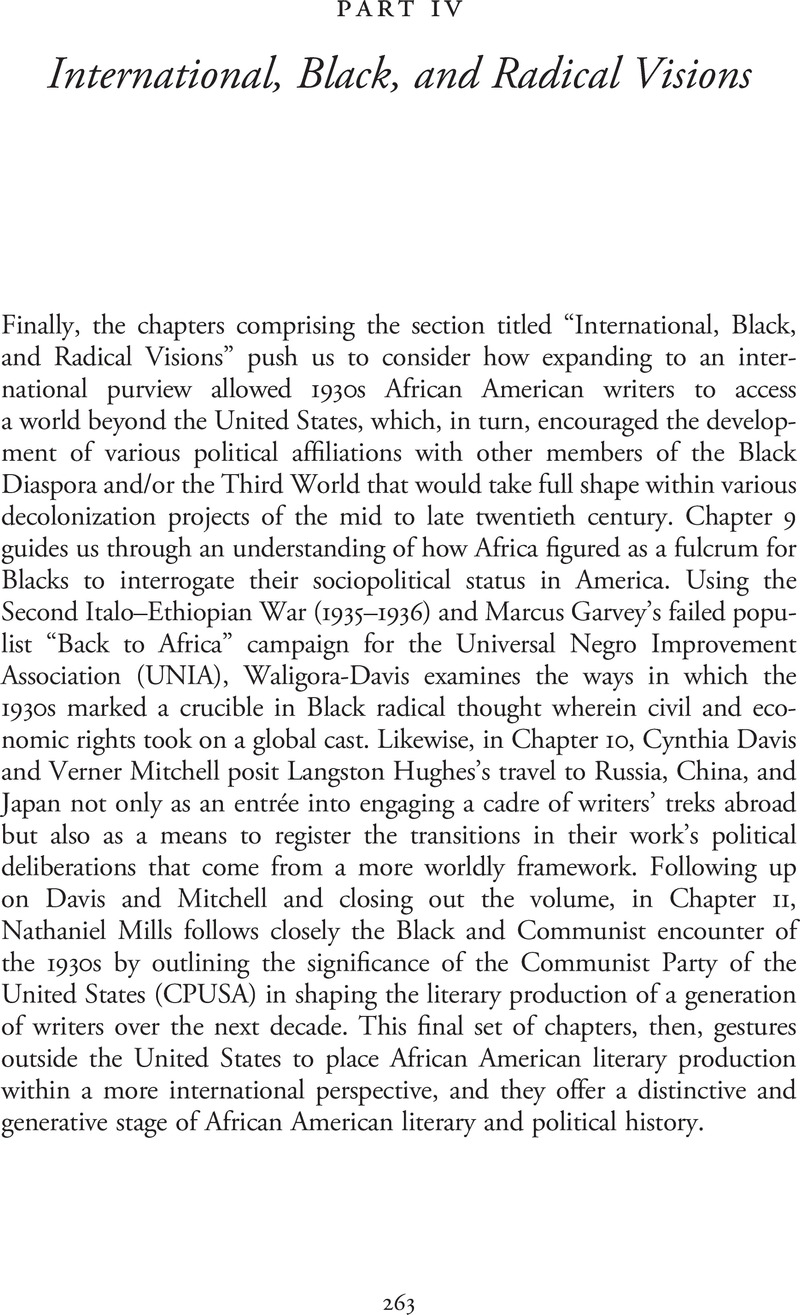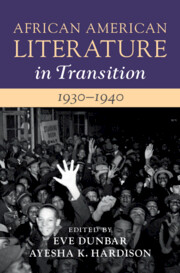Book contents
- African American Literature in Transition, 1930–1940
- African American Literature in Transition
- African American Literature in Transition, 1930–1940
- Copyright page
- Contents
- Figures
- Contributors
- Preface
- Chronology, 1930–1940
- Introduction
- Part I Productive Precarity and Literary Realism
- Part II New Deal, New Methodologies
- Part III Cultivating (New) Black Readers
- Part IV International, Black, and Radical Visions
- Index
- References
Part IV - International, Black, and Radical Visions
Published online by Cambridge University Press: 25 March 2022
- African American Literature in Transition, 1930–1940
- African American Literature in Transition
- African American Literature in Transition, 1930–1940
- Copyright page
- Contents
- Figures
- Contributors
- Preface
- Chronology, 1930–1940
- Introduction
- Part I Productive Precarity and Literary Realism
- Part II New Deal, New Methodologies
- Part III Cultivating (New) Black Readers
- Part IV International, Black, and Radical Visions
- Index
- References
Summary

- Type
- Chapter
- Information
- African American Literature in Transition, 1930–1940 , pp. 263 - 348Publisher: Cambridge University PressPrint publication year: 2022



